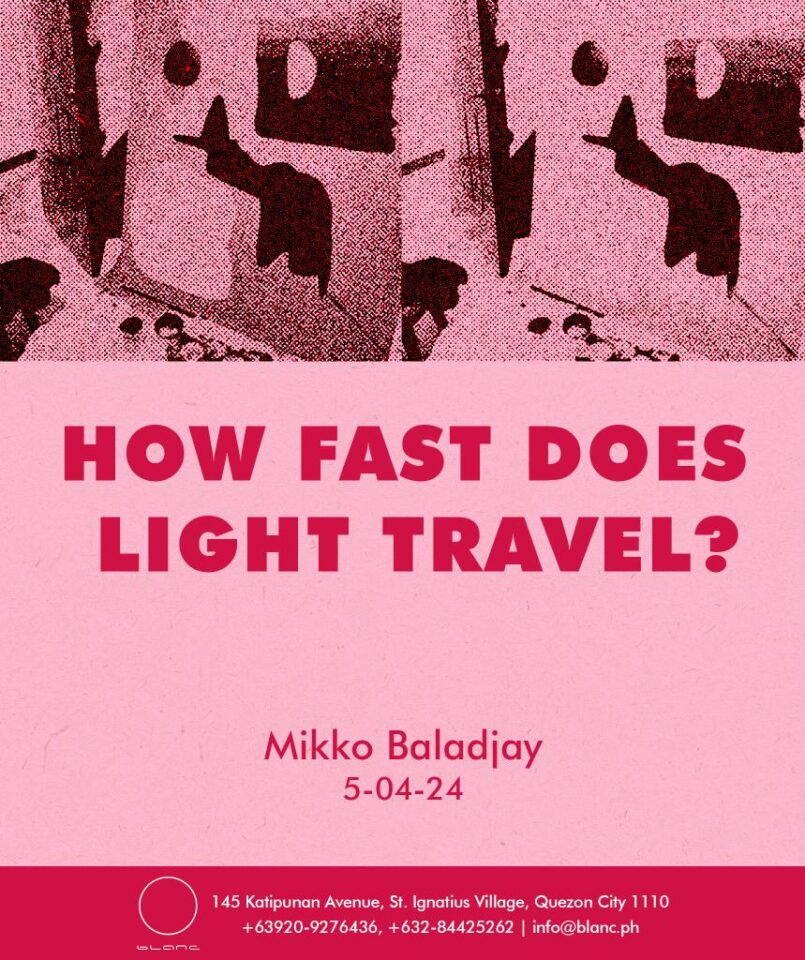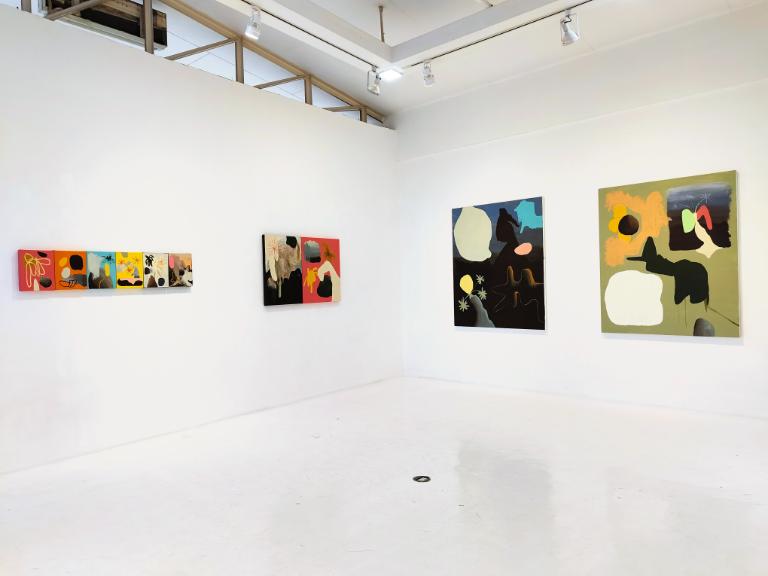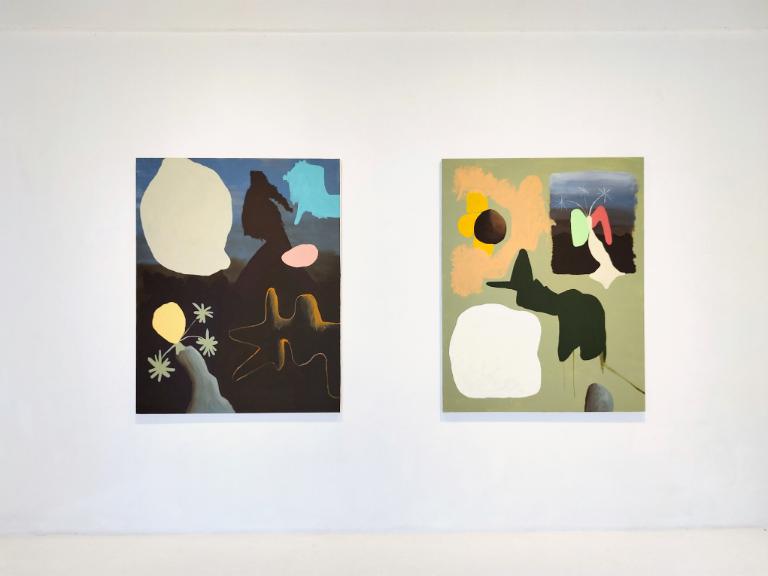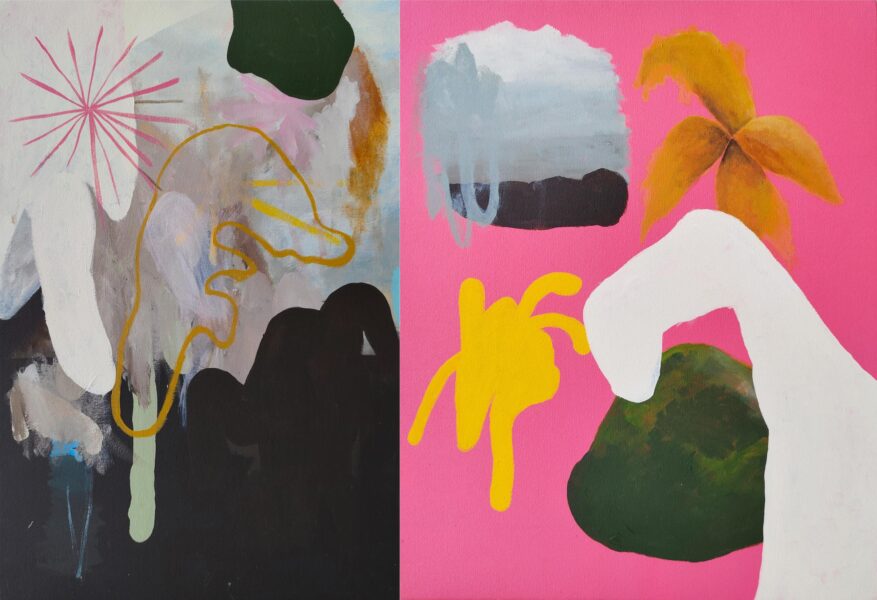
How Fast Does Light Travel? (and other rhetorical questions)
Things that feel like they travel at the speed of light: Idea seeds that turn into stems. Existential thoughts. A flashback turning into a fixation.
Through abstraction and intention, Mikko Baladjay ruminates on the overwhelming idea of human consciousness – and the even more overwhelming idea of how quickly or painstakingly long it takes to lose hold of it.
The idea behind How Fast Does Light Travel is both a deeply personal and academic experiment for Baladjay. Stumbling upon YouTube documentaries about dementia made him reflect on his grandfather’s battle with Alzheimer’s, and how light (and later on, death) is the endgame of the memory loss that comes with dementia. The anxiety and fear over the idea of the mind deteriorating before the body does led the artist to paralyzing existential thoughts “What if this happens to me or the people I care about?”
Baladjay’s acrylic paintings hardly provide answers, but rather, to break out of the stasis. For the artist, the shapes and unknown objects in these portraits represent identity, function, and affection, and how they slowly slip and fade away from recognition and familiarity. The grim and paralyzing nature of these thoughts hang heavily on him, and it feels like all we can do in the face of such situations is to grasp feebly. Is it really so feeble, though? Maybe the awareness at least helps us hold on to lucid moments and the people we love closer and more tightly – like seemingly meaningless shapes taking collective shape to form something that makes sense (for as long as things are permitted to make sense).
Somewhere along the process, Baladjay’s ambient companion, The Caretaker’s Everywhere at the End of Time proved to be much more significant than being just passive background music. Whether it was pure algorithm prophecy or just mere coincidence, Baladjay found out that the six-hours-long, six-album piece he would put on loop was actually dedicated to people with dementia. In its YouTube description, it breaks the illness down in six stages:
STAGE 1 – Described as the first signs of memory loss, but also “most like a beautiful daydream. The glory of old age and recollection. The last of the great days.”
STAGE 2 – The “self realisation and awareness that something is wrong with a refusal to accept that.” It describes the efforts to grasp at the memories harder, with a more somber overall mood – the “point before confusion starts setting in.”
STAGE 3 – The stage where “some of the last coherent memories before confusion fully rolls in and the grey mists form and fade away.” Here, the most poignant moments have been sealed in, but “the musical flow in places is more confused and tangled” with “the last embers of awareness” before the next stage sets in.
STAGE 4 – called the “Post-Awareness Stage 4” where the calm and lucidity “gives way to confusions and horror”. It marks the start of the warping or memories, becoming “more fluid through entanglements, repetition and rupture.”
STAGE 5 – Post-Awareness Stage 5 is riddled with confusion and horror – where more extreme “entanglements, repetition and rupture can give way to calmer moments.” Here, the previously unfamiliar “may sound and feel familiar.”
“Time is often spent only in the moment leading to isolation.”
STAGE 6 – Post-Awareness Stage 6 is without description.
-Nikki Ignacio
Works
Documentation














